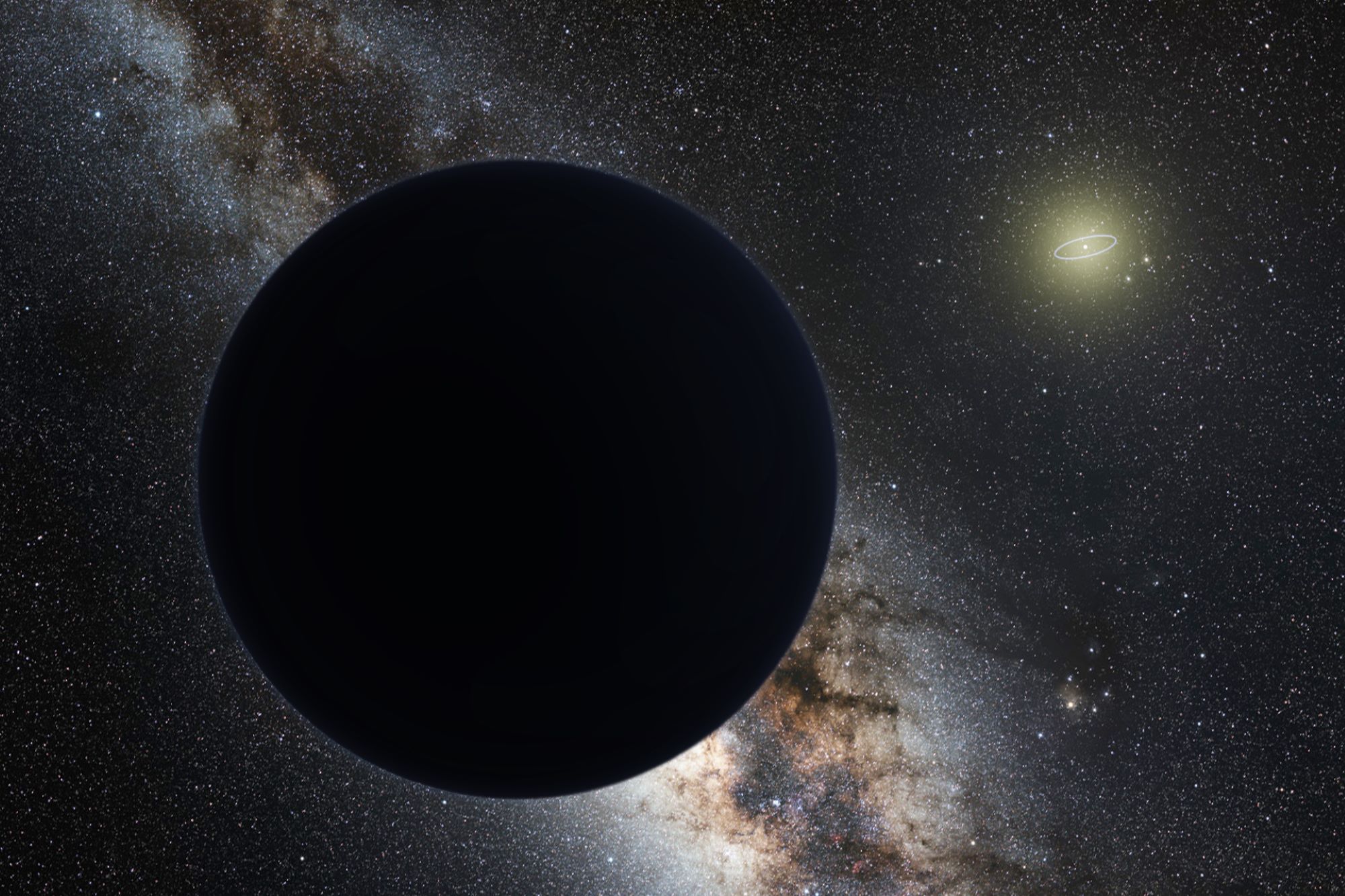

Our understanding of the solar system is a work in progress. Pluto’s demotion to a dwarf planet was just one of many revisions—in recent decades astronomers have cataloged new dwarfs, like far-off Eris, and spotted more moons around our gas giant neighbors. And now some researchers think there’s evidence for a new planet hiding beyond Neptune.
Two astronomers in Japan, Patryk Sofia Lykawka and Takashi Ito, claim there is a planet a little larger than Earth lurking in the Kuiper belt, the ring of icy debris where Pluto also resides, as they published last week in The Astronomical Journal. The pair hasn’t seen this world directly, but their computer models show that such a planet could explain the wonky observed orbits of other Kuiper belt objects.
The disturbance in this belt “predicts the existence” of an undiscovered planet with 1.5 to 3 times the mass of Earth, says lead author Lykawka, an astronomer at Japan’s Kindai University. “The solar system would officially have nine planets again.”
[Related: There might be an ice giant planet hiding in our solar system]
The Kuiper belt is somewhat similar to the asteroid belt: It contains small bits of rock and ice, all leftovers from the violent process of making planets. A few objects there have strange orbits, where their paths around the sun are extremely tilted or elongated (more egg-shaped than circular like Earth’s orbit). These weird orbits suggest that something massive must be pushing them around, tugged by its gravity—something as big as an undiscovered planet.
“It may be that this planet will be uncovered even in the next few years, if it exists on a relatively nearby orbit,” says Yale astronomer Malena Rice, who wasn’t involved in the new work.
Lykawka and Ito’s simulations show that a planet could explain the oddities in the Kuiper belt. The world, which they referred to as the Kuiper Belt Planet (KBP), would be located about 6 to 12 times further from the sun than even distant Neptune. The KBP’s orbit would also have to be tilted from the plane of the solar system by about 30 degrees, which is pretty weird. Dwarf planet Pluto sticks out because it’s off-kilter compared to the eight major planets—and its orbit is only tilted by about 17 degrees.

This bizarre and distant Earth-like planet, though, isn’t the first hidden world to be proposed. In 2016, astronomers from Caltech claimed to have evidence for a super-Earth, referred to as Planet 9 or Planet X, even farther out in the solar system. Those researchers also proposed Planet 9 as a way to explain the quirks of the Kuiper Belt; it caused quite a stir among scientists, who debated for years whether those idiosyncrasies were real or just the result of flawed observations.
Lykawka claims that the KBP hypothesis is superior to Planet 9 because it relies on other observations that haven’t caused as much dispute. “We demonstrated that a hypothetical Earth-like planet located in the far outer solar system could explain several properties of the distant Kuiper Belt and be compatible with observations simultaneously,” he says. “The Planet 9 model has yet to demonstrate that.”
Yet other researchers don’t think the KBP is necessary. Konstantin Batygin, an astronomer at Caltech who was part of the initial Planet 9 research, agrees that there are oddities in the Kuiper belt that have to be explained by some sort of additional object beyond Neptune. “However, all of this has been understood for quite some time within the framework of the Planet 9 model,” he says, questioning the need for this new work, whose predictions for a hidden planet overlap substantially with the existing Planet 9 hypothesis.
[Related: What will we name the solar system’s next planet?]
Batygin’s model suggests Planet 9 is somewhat bigger and farther: about five to six times the mass of Earth at 500 astronomical units (AU) away from the sun. Meanwhile, the KBP would be between 200 and 500 AU from the sun. (These are extreme distances—1 AU is equal to the gap between Earth and the sun.) Planet 9 would have an odd tilt to its orbit, to, of 20 degrees.
But we won’t know for sure if there’s a hidden planet, whether it looks like Planet 9 or the KBP, until astronomers actually pinpoint it in the night sky. Astronomers have been looking for Planet 9 for years, and that hunt includes some regions where the newly-proposed planet could be. “Those searches are still ongoing,” Rice says. “It’s incredible just how much parameter space remains to be searched in the outer solar system where hidden planets could be lurking.”
